The DynaPro NanoStar II is a specialized cuvette-based DLS system designed for analysis of proteins, gene therapy vectors, viruses and virus-like particles, micelles, liposomes, metallic and lipid nanoparticles, promiscuous inhibitors, and other samples.
Waters' custom quartz cuvettes enable precise, reliable measurements using only two microliters of sample, while exclusive disposable cuvettes offer similar sensitivity with as little as four microliters.
Walk-up operation with DYNAMICS Touch™
The NanoStar is the only DLS system providing a fully integrated, walk-up measurement experience. There is no need to start a lab computer, open DLS software, connect to the device, or even track down data files.
The DYNAMICS Touch measurement app, intuitive yet powerful, is built directly into the NanoStar. Using the large touchscreen, it walks users through setup and measurement, checks data quality to ensure reliable results, and displays outcomes instantly. Files and concise PDF reports can be saved on the device, shared over a network, copied to a flash drive, or even sent directly to your mobile phone.
Comprehensive, sophisticated analyses with DYNAMICS™
DYNAMICS is a powerful PC-based software suite designed for acquiring, analyzing, and reporting batch dynamic and static light scattering data. It enables advanced analysis and comparison of multiple datasets to reveal patterns and statistics.
The software can control the NanoStar directly for data collection or import files generated by DYNAMICS Touch.
A 21 CFR Part 11 compliant Security Pack is also available, allowing the DynaPro NanoStar to operate in GMP environments for quality control and at-line process monitoring.
Product description
Size and beyond
In combination with the flexible and intuitive DYNAMICS™ software and the built-in DYNAMICS Touch™ app, the NanoStar can measure size and size distributions, particle concentration, and weight-average molar mass, as well as solution properties linked to sample stability. These include the second virial coefficient (A2 or B22), the diffusion interaction parameter (kD), turbidity or opalescence, and the temperature at which protein melting or aggregation begins (Tm, Tonset).
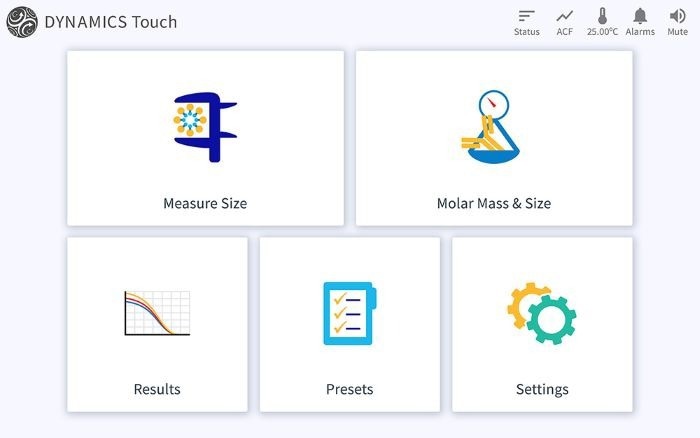
Image Credit: Waters | Wyatt Technology
Cuvette, and yet...
Another unique feature of the NanoStar is that its optical fiber pickup can be connected to any of Wyatt’s online MALS detectors, the DAWN™ or miniDAWN™, to enable online DLS measurements within the same detection volume used for SEC-MALS or FFF-MALS analyses.
With its wide range of advantages, the NanoStar stands out as a truly exceptional cuvette-based DLS detector. For greater throughput, the DynaPro™ Plate Reader is the only commercially available DLS plate reader capable of performing in situ, high-throughput screening across thousands of conditions each day using standard microwell plates.
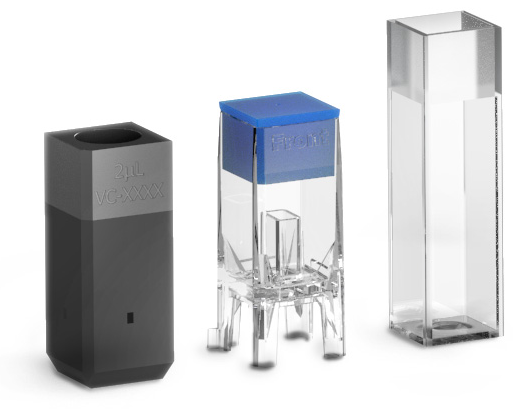
Image Credit: Waters | Wyatt Technology
Key features
- DYNAMICS Touch on-board app for walk-up operation
- Temperature from -10 °C to +120 °C
- Rh from 0.2-1000 nm
- Turbidity: 1.0 to 80 NTU
- Molecular weight: 300 Da to 10MDa
- Separate, optimized SLS and DLS detection channels
- Auto-attenuation spanning five orders of magnitude.
Versatile, high-quality options
Measurements can be taken using premium quartz cuvettes with as little as two microliters of sample in either aqueous or organic solvents across the full extended temperature range. Each cuvette has a solvent reservoir to minimize evaporation during high-temperature or long-duration analyses.
The exclusive disposable cuvettes offer optical quality comparable to quartz while requiring just four microliters of sample, suitable for aqueous or select polar solvents. For even greater flexibility, larger-volume quartz and disposable cuvettes are available.
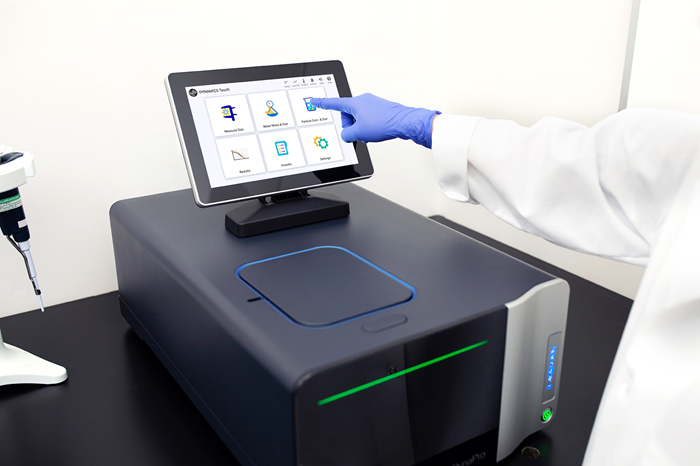
Image Credit: Waters | Wyatt Technology
On-Line operation
On-Line MALS and DLS in a shared flow cell
Simultaneous measurement of molar mass and size is essential for studying the structure and conformation of macromolecules (e.g., polymer branching ratios or distinguishing between empty and filled vesicles).
MALS alone cannot determine size from angular dependence for smaller molecules like proteins, so DLS is a vital complementary method. On-Line DLS is a powerful complement to SEC-MALS or FFF-MALS systems, delivering hydrodynamic radius measurements and, when combined with MALS, the shape factor Rg: Rh for larger nanoparticles.
Rather than inserting an additional in-line detector, which can cause band broadening, dilution, misalignment, and reduced resolution, Wyatt’s advanced design allows the DLS detector to share the same laser and flow cell as the MALS system.
Using the online DLS option, the NanoStar II can be linked to a MALS flow cell. The ASTRA™ chromatography software interfaces with both the MALS and DLS detectors to collect data concurrently, processing and reporting individual parameters such as molecular weight, rms radius, and hydrodynamic radius, as well as combined results like molecular configuration determined by the shape factor.
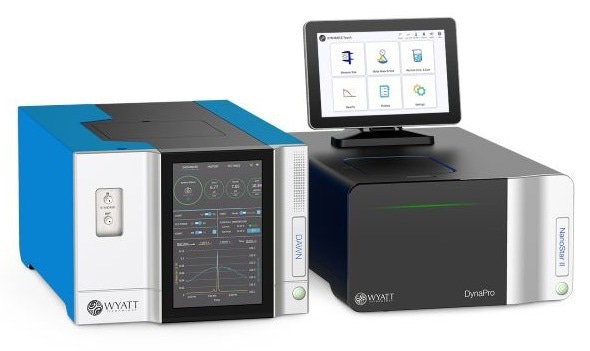
Image Credit: Waters | Wyatt Technology
Advanced technology
DLS technology
Most commercial DLS systems use an avalanche photodiode (APD) as a single-photon counting module (SPCM). Because of their fast, high-gain response, APD-based SPCMs are highly effective, reliable choices for DLS.
The NanoStar uses a temperature-controlled APD combined with an advanced double-density, multi-tau (DDMT) correlator to analyze diffusion coefficients, particle size, and size distributions. The DDMT correlator features 512 bins, spanning time scales from 100 nanoseconds to one hour, enabling measurement of hydrodynamic radii (Rh) from 0.2-1000 nm.
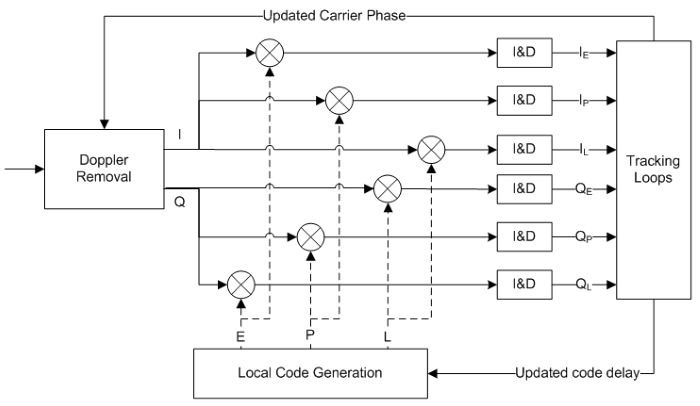
Image Credit: European Space Agency
SLS technology
Although size is the primary focus of DLS, measuring molar mass and particle concentration is also important. Molar mass of macromolecules with specific conformations (e.g., globular proteins) can sometimes be estimated from the measured Rh; however, this model-based approach is frequently inaccurate since many molecules do not fit these models.
The NanoStar determines molar mass directly using static light scattering (SLS). For particles such as viruses and lipid nanoparticles, a dedicated SLS detector combined with DLS-measured hydrodynamic radius provides fast, reliable particle concentration measurements.
In just seconds, users can determine particle size, detect additional species, and quantify the number of particles in solution.
In addition to the SPCM-based DLS channel, the NanoStar includes a separate, optimized SLS detection channel equipped with a highly linear, low-noise photodiode, also used in Wyatt’s online multi-angle light scattering (MALS) detectors. This SLS channel ensures precise and sensitive molar mass measurements ranging from 300 Da to 10MDa, with the upper limit determined by molecular conformation and the measured Rh.
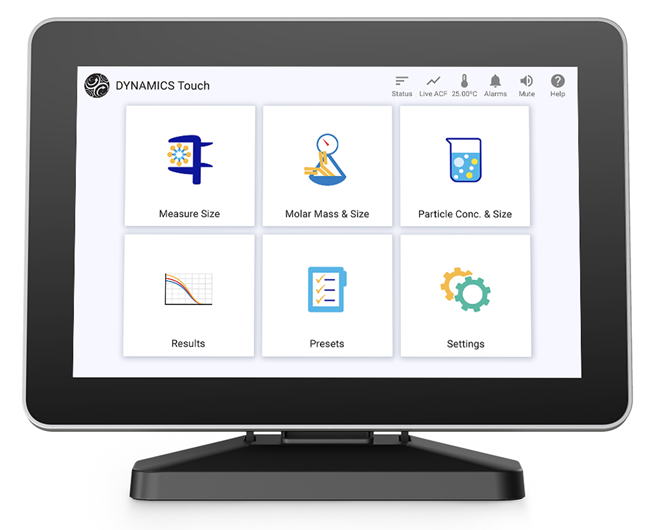
Image Credit: Waters | Wyatt Technology
And more unique technology
To ensure the NanoStar is always kept in range, the platform features automatic attenuation spanning five orders of magnitude. Its air-launched laser, combined with proprietary high-sensitivity optics, eliminates the need for single-mode optical fiber. The NanoStar’s temperature control system surpasses comparable DLS detectors, offering rapid temperature ramps from -10 °C to +120 °C.
Accessories
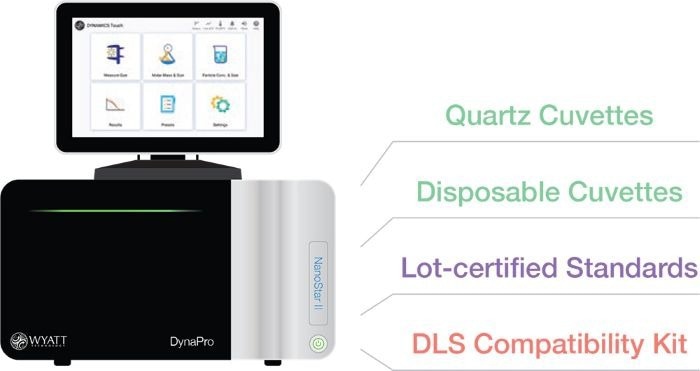
Image Credit: Waters | Wyatt Technology
Software
DYNAMICS™ enables single or automated experiments and processes DLS and SLS data to determine size and size distributions, molar mass, particle concentration, second virial coefficient A2, diffusion interaction parameter kD, and the temperature at which melting or aggregation begins.
A 21 CFR Part 11 compliant Security Pack is available, allowing the DynaPro NanoStar to operate in GMP environments.
DYNAMICS Touch™ allows the user to measure and analyze DLS results directly on the NanoStar II’s touch screen using the built-in app. Its simple, intuitive interface makes walk-up DLS measurements faster and easier than ever. Users can also import DYNAMICS Touch data into DYNAMICS for further analysis.
Specifications
Source: Waters | Wyatt Technology
| |
|
| Size Range (Radius) |
0.2-1000 nm |
Static Scattering Molecular
Weight Range |
300 Da to 10 MDa* |
| Turbidity Range |
1.0-80 NTU |
| Particle Concentration Range |
1x105-1x 1015 (dependent on size) |
| Sensitivity |
0.1 mg/mL of 14.4 kDa lysozyme in PBS |
| Temperature Range |
-10 °C to +120 °C**
Maximum ramp rate 15 °C/min |
| Sample Options |
|
| Sample Cells |
Quartz cuvette: 2.0 μL or 45 μL,
Disposable cuvette (cyclic olefin copolymer), generic 4.0 mL quartz and disposable cuvettes (with adapter) |
| Minimum Sample Volume |
2.0 μL in quartz cuvette; 4.0 μL in disposable cuvette |
| Optics |
|
| Laser Wavelength |
658 nm |
| Laser Power Control |
Programmable 10 % to 100 % |
| Scattering Angle |
90 ° |
| Optical Fiber |
Multi-mode |
| Additional Detectors |
Laser monitor for active stabilization; Forward monitor measures transmitted light for turbidance and laser/cell diagnostics |
| Electronics |
|
| Data Acquisition Time |
One to 3600 sec |
| Correlator |
512 channel, 100 nsec sampling time in a multi-tau layout |
| Dimensions |
57 cm (L) x 36 cm (W) x 20 cm (H) |
| Weight |
16kg |
*Upper limit depends on conformation: it is limited to a maximum Rh of 50 nm.
**Dry air or nitrogen is required for operation below 20 °C.